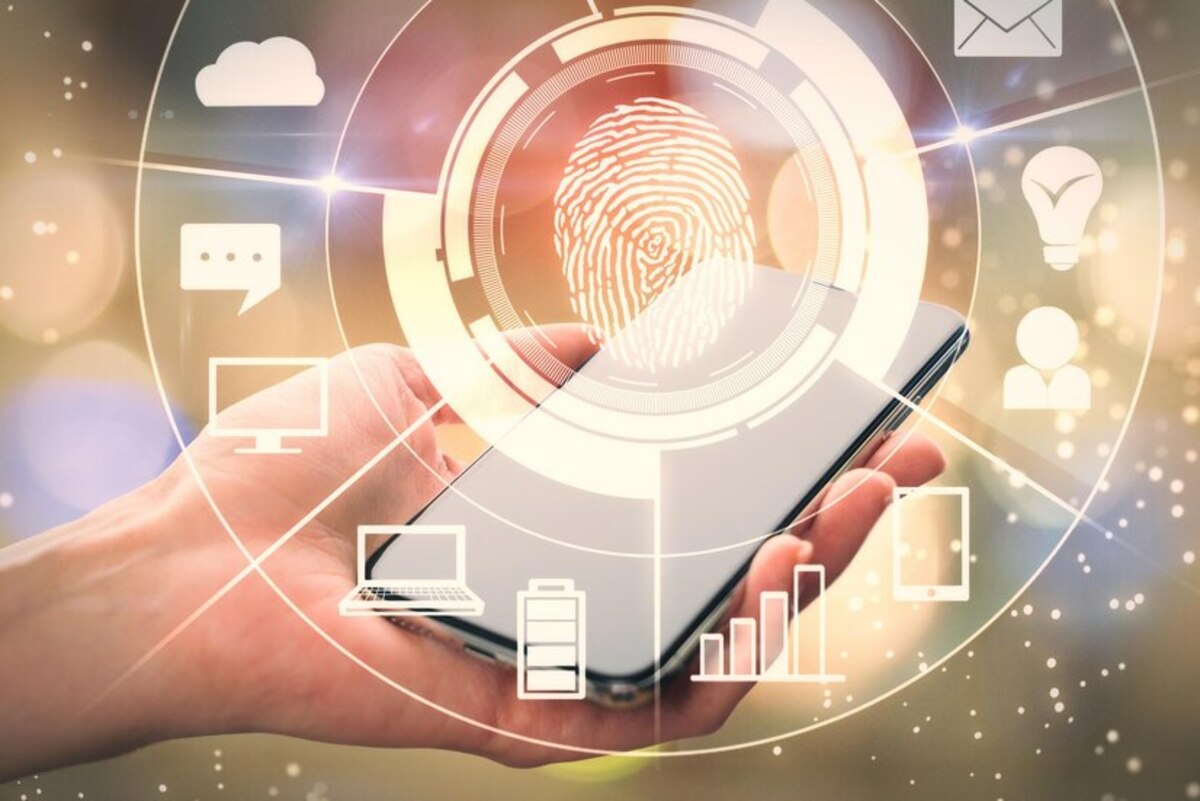Although every human being has a different fingerprint, it might interest you to learn that there are specific patterns that fingerprints display. Follow this article to explore different types of fingerprints and how they are used for evidence and identification purposes.
The fact that no two fingerprints are alike, not even in the case of twins, often leaves many people amazed. We often wonder how criminal authorities use fingerprints to identify murderers and what lies beneath fingerprint identification. The answer lies in the patterns of fingerprints. Fingerprints are the result of little friction ridges that are present on the end of an individual’s fingers, thumbs, and toes and are arranged in a pattern of spirals and loops.
Every individual has a different number, shape, location, and overall structure of their ridges. This is what makes their fingerprints unique. Even though they might diminish a little when an individual grows old, they do not change or alter with age. Injuries like burns or cuts also have no effect on the ridge structure of fingerprints.
Have you ever wondered how such a teeny tiny fingerprint pattern gets transferred to other surfaces? Well, this is because each ridge has sweat glands that produce sweat, and as a result, your fingerprint ridges are transferred to the surfaces you touch. This is precisely how criminal investigators are able to collect fingerprints from the crime scenes.
From biometric identification to criminal investigation, fingerprints are used for a variety of purposes. Many institutions like hospitals and banks use fingerprint recognition for security purposes. However, the major usage of fingerprints lies with criminal investigation authorities and law enforcement agencies. This is because fingerprints are the key elements in solving crime cases.
This article will explore different types of fingerprints, their structure, and how they vary from each other. So, let’s start.
What are fingerprints?
Fingerprints refer to the patterning formed by the ridges found on an individual’s fingertips. This ridged pattern is found not just on our fingertips but also on our toes, soles, and palms. It is different in every individual’s case. Fingerprints are totally unique; no two humans have been found to have the same fingerprint pattern. There is one in sixty-four billion chances that an individual’s fingerprint matches exactly with another individual’s fingerprint.
Adding to the uniqueness, even two fingers of the same individual cannot have the same fingerprints. Every finger, or toe, has a unique fingerprint that is different from other fingerprints.
Yes, that is right. Fingerprints are so unique that even two identical twins have different fingerprints. They might have the same DNA, which is the genetic material in a human being’s cells, but they cannot have the same fingerprints. So even if they fool everyone with their identical looks, they cannot cheat the fingerprint testing. This way, fingerprints are even more unique than DNA.
The ridges that constitute fingerprints are called friction ridges which contain pores and sweat glands. These sweat glands produce sweat, and as a result, individuals leave fingerprints on almost everything they touch. While the major scientific function of these friction ridges is to help us grip objects and not let things slip or slide from our hands, the fingerprint patterns are now significantly being used for legal, social, and many other scientific aspects.
Fingerprints are usually recorded in ink on paper and digitally on a computer. They are used as identifiers for individuals in many ways. Many organizations identify individuals on the basis of their fingerprints. Nowadays, electronic biometric readers are used commonly in mobile phones and many other digital devices. Talking about crime scenes, fingerprints play a vital role in providing crucial evidence in finding the real criminal.
History of fingerprints
Fingerprints have traversed through epochs, imprinting their significance across civilizations since ancient times. Babylonians pioneered by etching their thumb and finger impressions onto clay tablets and seals, utilizing these distinctive marks as signatures for recording transactions. Meanwhile, ancient Chinese advanced the practice by employing ink to document fingerprints on paper, thus fostering their utility in business and identification realms.
In the annals of scientific discovery, physiologist Marcello Malpighi stands as a trailblazer, as he meticulously examined fingerprints through microscopes in 1686, discerning the intricate ridges and loops. Jan Purkinje, another luminary in physiological studies, delineated nine distinct patterns within human fingerprints in 1823. Yet, it was Sir Francis Galton, an eminent anthropologist and eugenicist, who substantiated their scientific essence.
Galton’s seminal research unveiled the uniqueness of fingerprints, establishing them as immutable traits persisting throughout an individual’s lifespan. His magnum opus, “Fingerprints,” published in 1892, delineated the foundational classification of fingerprints into loops, arches, and whorls, a taxonomy still revered today.
Simultaneously, law enforcement agencies recognized fingerprints’ forensic potential. Inspired by Galton’s findings, Sir Edward Richard Henry, Commissioner of the Metropolitan Police in London, embarked on refining fingerprint recognition for criminal identification. Henry’s pioneering effort birthed the eponymous Henry Classification System, an intricate framework based on the directional flow and patterns of fingerprint motifs, widely adopted worldwide.
The dawn of the 20th century heralded the institutionalization of fingerprint bureaus, with Scotland Yard founding its first bureau based on Henry’s system. Subsequently, in 1903, the New York Police Department, the New York prison system, and the Federal Bureau of Prisons, followed suit, integrating fingerprint systems for criminal identification. Notably, the American military embraced fingerprint identification in 1905, marking a pivotal milestone in forensic science’s evolution.
Types of fingerprints
Fingerprints are unique, but according to their classification, an individual’s fingerprints fall into one category or another. The fingerprint classification system found by Sir Henry Edward classified the fingerprint patterns into three different types. These categories were then further sub-categorized later on and are used to date. The major three categories include arch, loop, and whorl. These, along with their sub-categories, are described as follows.
Arch fingerprint
The arch is the rarest type of fingerprint. This fingerprint pattern is found in only 5% of the total world population. It is patterned in a way that ridges run from one side of the fingertip to the other side of the fingertip without making any backward turn. The arch fingerprint pattern lacks or has very few lines, cores, or deltas on the tips. Even if there is a delta, there is no recurving or backward ridge that collides between the core and delta points. There are two further sub-categories included in the arch pattern.
Plain arch fingerprint
Even though the plain arch fingerprint pattern is the rarest among all, it is also one of the fingerprint patterns that are recognized or discerned easily. This pattern is characterized by raised ridges that consistently flow from one side of the finger to the other in a continuous fashion. The ridges generally start from one side of the finger, move upward, and then come back down towards the other side of the finger.
It’s more like small arches built up slowly from the heart or center point of the fingertip. These types of fingerprints are often perceived as ocean waves because they make a wave-like pattern.
Tented arch fingerprint
The tented arch fingerprint is similar to the plain arch fingerprint in the way that the ridges in both types of fingerprints move from one side of the finger and flow to the other side of the finger consistently. The difference is in the arch or the pitch of the raised edge. As the name suggests, this type of fingerprint has a sharper edge than a plain arch fingerprint, forming a tented arch. The tented arch lies in the center and is not continuous or consistent like the plain arch.
This type of fingerprint has sharper upthrusts towards the heart or middle of the fingertip, which appear to form a tent. Tented arch fingerprints are not as rare as plain arch fingerprints.
Loop fingerprint
The Loop fingerprint pattern is one of the most popular fingerprint patterns and constitutes almost 60% to 70% of the total population. Unlike arch fingerprints, where there is no backward motion of the ridge, ridges in loop fingerprints move backward without twisting. A loop fingerprint pattern has only one delta and at least a single core. When such a fingerprint is imprinted on a card, it makes a reverse image of the fingerprint just like that of what we see in the mirror.
Ulnar loop fingerprint
Ulnar loop fingerprints are named after a bone in the forearm called the ulna. It’s because ridges in this pattern run from the thumb of an individual’s hand towards the hand’s little finger, the same side where the ulna bone is located. The ulnar loop fingerprint is characterized by a small turn; meaning that the ridges move backward slightly, without making a sharp full turn. The loops move towards the small finger; this is how you identify the ulnar loop fingerprint pattern.
Radial loop fingerprint
Radial loop fingerprints are also named after a bone in the forearm, which is called the radius. This is because ridges in this pattern run from the little finger of an individual’s hand towards the thumb of the hand, the same side where the radius bone is located. That means the downward slope of the radial loop is from the little finger towards the thumb of the hand. This loop fingerprint type is not very common and is mostly found on the index fingers.
Double-loop fingerprint
It is called a double-loop fingerprint because there are two different loops in this pattern. Both of these loops are separate and each one has an individual shoulder for each core. Moreover, there are two deltas and more than one ridge. When combined, all these elements make a complete circuit.
Whorl fingerprint
Whorl fingerprint pattern is neither rare nor common. It is found in almost 25% to 35% of the total world population. As the name indicates, the ridges in this fingerprint pattern make up a whorl. Some of these ridges make a turn through at least one circuit. Therefore, the whorl fingerprint pattern has one core and two deltas.
Plain whorl fingerprint
This is the simplest form of a whorl fingerprint. A plain whorl consists of an unbroken circular or spiral pattern that forms a swirl. The ridges in a plain whorl pattern make a turn to create a complete circuit with two deltas.
Central pocket loop whorl fingerprint
In the central pocket loop whorl fingerprint, the central ridges in the pattern curve more than once. So there is at least one recurving ridge. The whorl ridges make a single complete circle of any form; it can be spiral, oval, or simply circular or round.
Double-loop whorl fingerprint
This type of fingerprint is not easy to recognize and can only be recognized with close observation. The double loop whorl fingerprint pattern seems to contain two separate loops or whorls, which surround each other from different directions
Accidental whorl fingerprint
The accidental whorl fingerprint consists of a combination of two different types of fingerprint patterns that have two or more deltas.
Advantages of fingerprint biometrics
Nowadays, fingerprints have gone beyond identification purposes and law enforcement usage. This is generally because fingerprints have made our lives so much easier than before. Convenience is one of the biggest advantages of fingerprint biometrics. When you don’t have to type in your password or pin for any access or unlocking purposes and can simply instead use your fingertip for this purpose, it is time-saving as well as quickly done. And you also don’t have to remember your password or pin at all times.
Moreover, there are security benefits as well. Fingerprints can help put a secure lock on many devices and access portals. Your password or pin is more likely to be stolen or figured out, but who can steal your fingerprints. So with fingerprints, you get the double benefit of security with convenience. This is an indication that the adoption of fingerprint biometrics will continue to grow over the coming years to become a run-of-the-mill tech.
With the COVID-19 pandemic, there has been an increase in the usage of fingerprint biometrics. When every work in our daily life became contactless, fingerprints were used for many purposes, including contactless payments, transactions, and access to many things that would have otherwise included contact.
Applications of fingerprints in daily life
From being an area of interest for research and study to an identification tool, fingerprints have gone a long way. Once confined to the world of science fiction, now there is hardly a day when we don’t interact with some form of fingerprinting. In the current era, we are surrounded by biometric technology. Whether we are unlocking our phones or securely boarding a flight, we are using our fingerprints almost every day.
There are quite a lot of fingerprint applications in our daily lives, but below, we have listed some of the essential applications of fingerprint biometrics in our everyday life.
Law enforcement and criminal investigation agencies
This is perhaps one of the biggest and oldest applications of fingerprints. The usage of fingerprints for criminal investigation and identification purposes goes back to the 19th century. In 1892, police officer Juan Vucetich solved a case where two boys were murdered in Necochea village. He used the suspects’ fingerprints to find out the identity of the real killer, who turned out to be the boys’ mother. This was the first time fingerprints were used in a criminal investigation. Since then, it has become a common practice that is exercised to this date.
Nowadays, fingerprint biometrics is commonly used in law enforcement and criminal investigation agencies such as the FBI and other intelligence agencies worldwide. The very first step in examining a crime scene is to collect any fingerprints left on the scene. And suppose the investigators get a match in their database where every citizen’s fingerprints are stored. In that case, it helps the authorities to find out the whereabouts of the criminal and eventually solve the case easily.
Access and authentication for digital devices
There isn’t a single day when we do not use our fingerprints to unlock our phones or other digital devices. Your smartphone fingerprint sensor is one of the most common examples of your everyday fingerprinting. The smartphone giant, Apple, was the first one to introduce touch fingerprint sensors to unlock smartphones.
Not just your smartphone, you can also find fingerprint locking mechanisms on many individual applications. People prefer fingerprint locks on confidential apps like banking or messaging apps.
Access to buildings and restricted areas
Whether at your house or in your office, fingerprint biometrics is a commonly used way of allowing access and authentication to devices, buildings, or restricted parts of your office.
When a building’s access is controlled by fingerprint biometrics, it not only makes it easy for the authorized personnel to enter the building but also makes the building safer and more secure. While access cards, keys, or any other sort of password can be stolen, it is difficult and almost impossible to pass through a fingerprint biometric identifier.
Banking
Banking is another sector where fingerprint biometrics are prevalent. For their customers to have a more seamless service, banks are making use of fingerprints in different transactions and areas. As everything in the world is quickly digitizing, banks, all around the world, are also looking forward to implementing fingerprint biometrics as it will help in the customer as well as employee identification and a smooth and enhanced customer experience.
Over the past years, banks have faced many identity frauds and thefts. That is why customers are worried about their identity protection and constantly having to prove their identity multiple times. This is the reason customers are making their way toward digitized banks that allow biometric identification in order to save themselves from all the hassle. This gives banks all the more reasons to use fingerprint biometric identification services.
Conclusion
Fingerprints hold immense significance in our daily lives, seamlessly integrated into our routines and serving as crucial identifiers. They are indispensable tools in law enforcement, aiding in the apprehension of criminals and the prevention of further offenses.
Every moment of our lives, from unlocking our phones to accessing secure areas, underscores the importance of fingerprints. They provide a unique signature, ensuring that our identities remain secure and our actions traceable. In the realm of law enforcement, fingerprints serve as invaluable clues, enabling investigators to link individuals to crimes and bring perpetrators to justice.
The uniqueness of fingerprints cannot be overstated; no two people share the same pattern, nor do any two fingers on the same individual. While similarities exist, allowing for classification into distinct categories, each fingerprint possesses its own distinctiveness, akin to a personal seal.
By delving into the diverse types of fingerprints and the methodologies for their differentiation, this article aims to shed light on their significance. Understanding these intricacies not only fosters appreciation for the complexity of human identification but also underscores the importance of fingerprint analysis in various fields.
In conclusion, fingerprints serve as more than just physical markers; they are intricate codes that unlock doors, safeguard identities, and uphold the fabric of justice. Through this exploration, may you gain deeper insights into the multifaceted nature of fingerprints and their indispensable role in our lives.












